Abstract
215 preschool siblings of children presenting with squint/amblyopia were screened by refraction after cycloplegia. The presence of +2.00 or more D of spherical hypermetropia in both eyes, or +1.00 or more D sphere or cylinder of anisometropia was significantly associated (P=0.0779%) with that child being identified 2+ years later as having either squint or amblyopia or both. Astigmatism of +1.50 or more D in either eye was significantly associated with anisometropia (P=0.000 0013%). If bilateral hypermetropia of +2.00 or more DS and/or +1.50 or more D of astigmatism in either eye had been taken as criteria for abnormality (ignoring anisometropia), there was a more significant association (P=0.0025%) between refraction and squint/amblyopia in these siblings. Such a child had 4 times more chance of having a visual defect than one who had no error of refraction when screened. These findings suggest that an environmental factor such as blurred vision may be relatively more important as a cause of squint/amblyopia than a genetically determined neurological abnormality.
Full text
PDF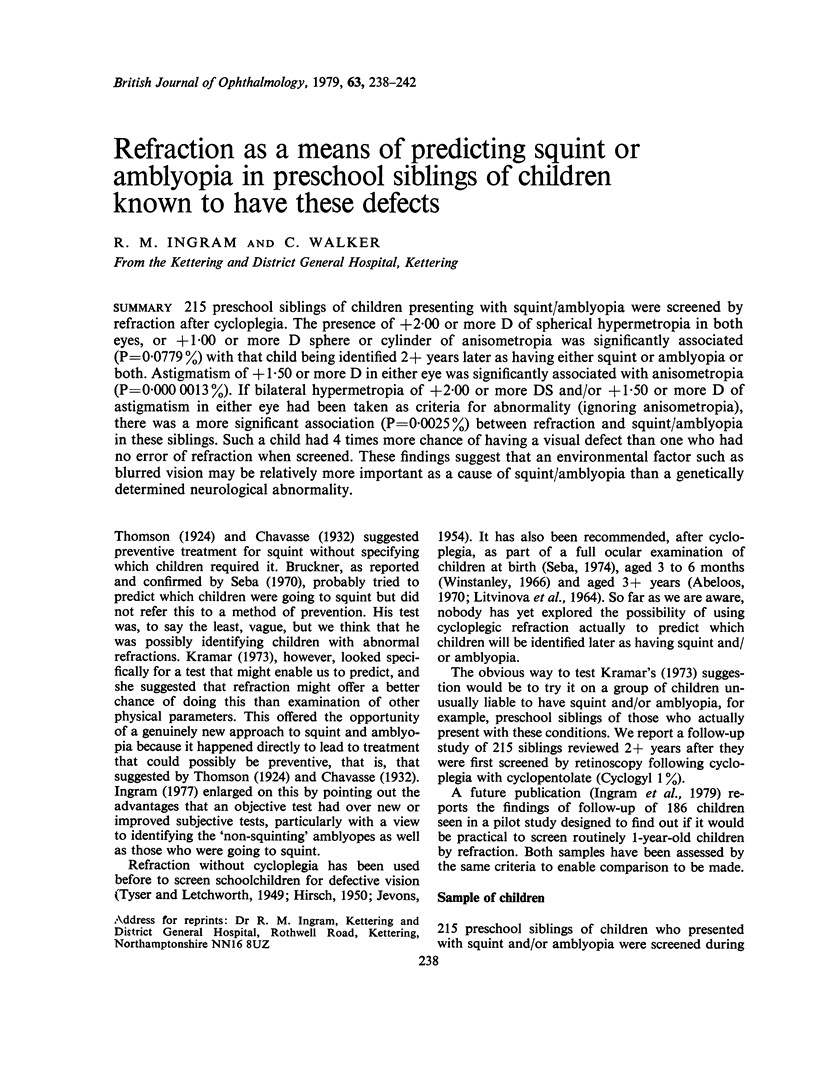
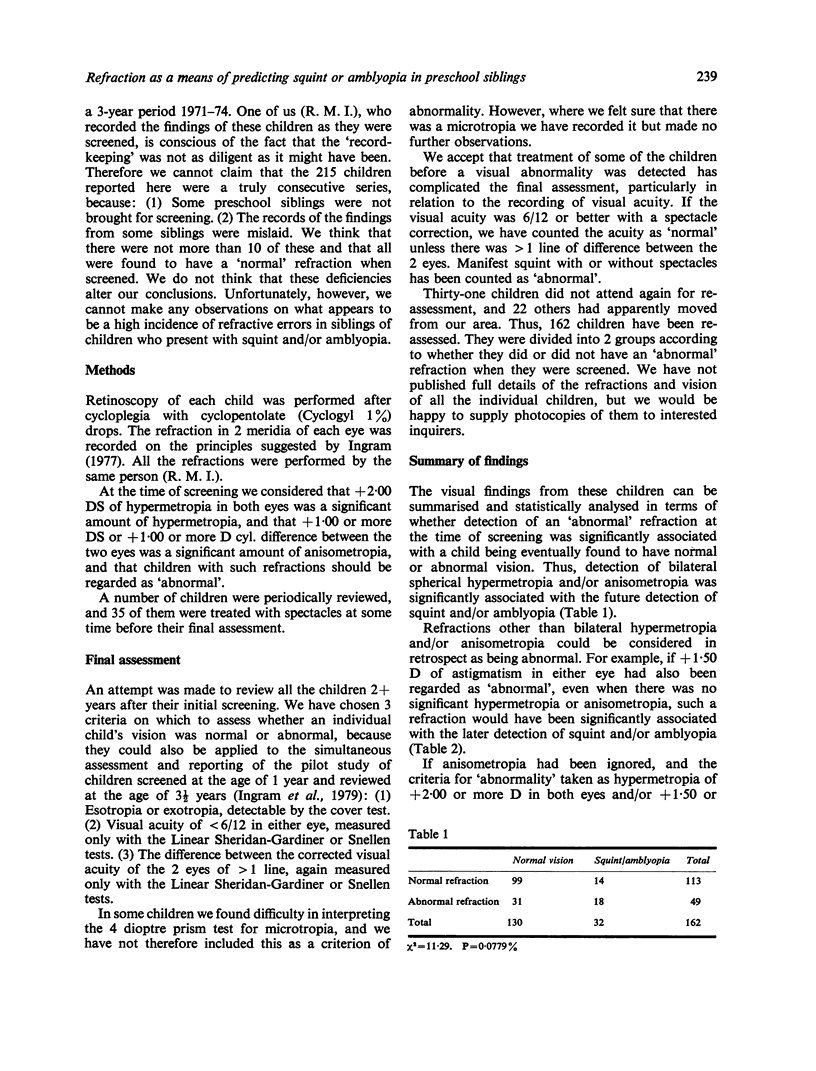
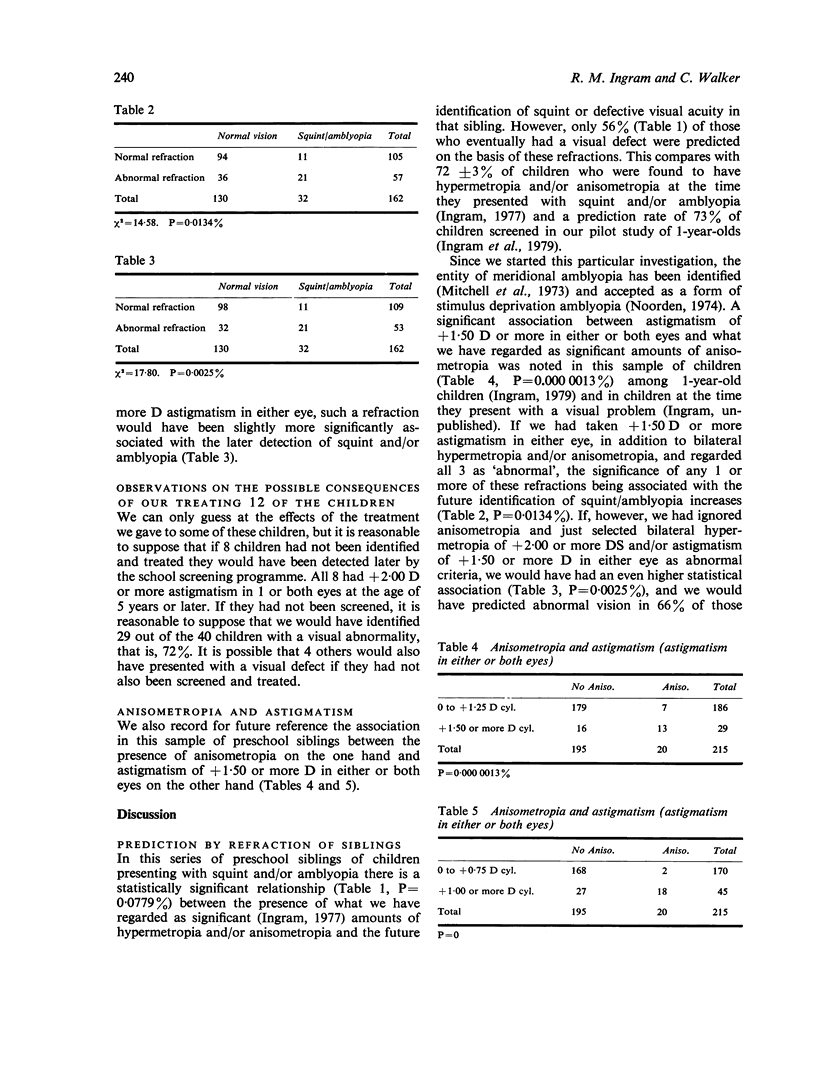
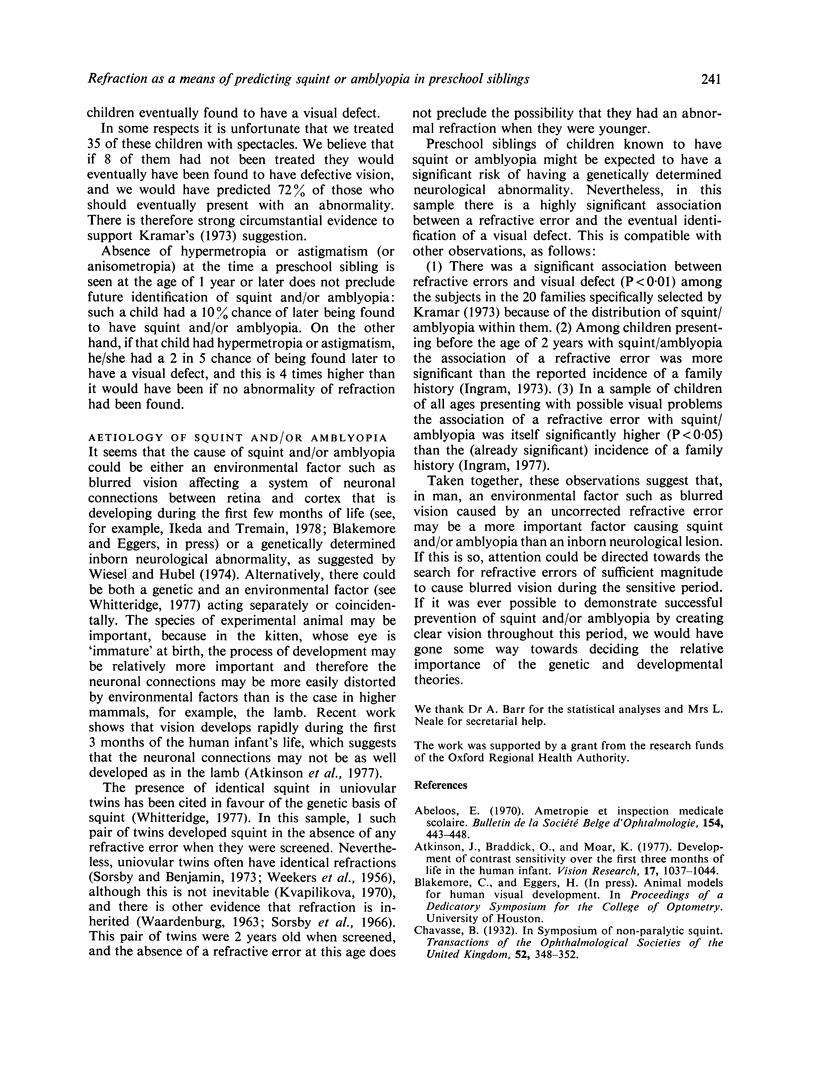
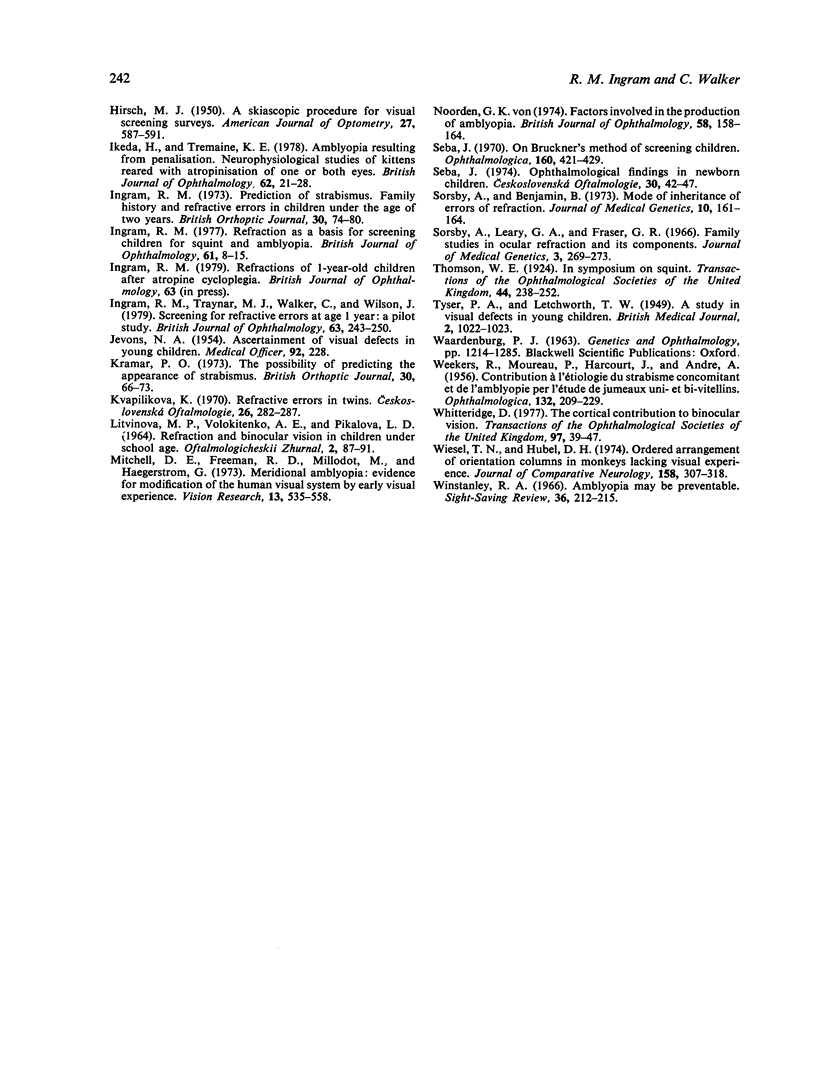
Selected References
These references are in PubMed. This may not be the complete list of references from this article.
- ANDRE A., HACOURT J., MOUREAU P., WEEKERS R. Contribution à l'étiologie du strabisme concomitant et de l'amblyopie par l'étude de jumeaux uni- et bivitellins. Ophthalmologica. 1956 Oct;132(4):209–229. doi: 10.1159/000302929. [DOI] [PubMed] [Google Scholar]
- Atkinson J., Braddick O., Moar K. Development of contrast sensitivity over the first 3 months of life in the human infant. Vision Res. 1977;17(9):1037–1044. doi: 10.1016/0042-6989(77)90007-4. [DOI] [PubMed] [Google Scholar]
- HIRSCH M. J. A skiascopic procedure for visual screening surveys. Am J Optom Arch Am Acad Optom. 1950 Dec;27(12):587–591. doi: 10.1097/00006324-195012000-00001. [DOI] [PubMed] [Google Scholar]
- Ikeda H., Tremain K. E. Amblyopia resulting from penalisation: neurophysiological studies of kittens reared with atropinisation of one or both eyes. Br J Ophthalmol. 1978 Jan;62(1):21–28. doi: 10.1136/bjo.62.1.21. [DOI] [PMC free article] [PubMed] [Google Scholar]
- Ingram R. M. Refraction as a basis for screening children for squint and amblyopia. Br J Ophthalmol. 1977 Jan;61(1):8–15. doi: 10.1136/bjo.61.1.8. [DOI] [PMC free article] [PubMed] [Google Scholar]
- Ingram R. M., Traynar M. J., Walker C., Wilson J. M. Screening for refractive errors at age 1 year: a pilot study. Br J Ophthalmol. 1979 Apr;63(4):243–250. doi: 10.1136/bjo.63.4.243. [DOI] [PMC free article] [PubMed] [Google Scholar]
- Kvapilíková K. Refrakcní vady u dvojcat. Cesk Oftalmol. 1970 Sep;26(5):282–287. [PubMed] [Google Scholar]
- LITVINOVA M. P., VOLOKITENKO A. E., PIKALOVA L. D. REFRAKTSIIA I BINOCULIARNOE ZRENIE U DETE I DOSHKOL'NOGO VOZRASTA. Oftalmol Zh. 1964;19:87–91. [PubMed] [Google Scholar]
- Mitchell D. E., Freeman R. D., Millodot M., Haegerstrom G. Meridional amblyopia: evidence for modification of the human visual system by early visual experience. Vision Res. 1973 Mar;13(3):535–558. doi: 10.1016/0042-6989(73)90023-0. [DOI] [PubMed] [Google Scholar]
- Seba J. Zur Methodik der objektiven Untersuchung schielverdächtiger Kleinkinder. Ophthalmologica. 1970;160(6):421–429. doi: 10.1159/000306048. [DOI] [PubMed] [Google Scholar]
- Sorsby A., Benjamin B. Modes of inheritance of errors of refraction. J Med Genet. 1973 Jun;10(2):161–164. doi: 10.1136/jmg.10.2.161. [DOI] [PMC free article] [PubMed] [Google Scholar]
- Sorsby A., Leary G. A., Fraser G. R. Family studies on ocular refraction and its components. J Med Genet. 1966 Dec;3(4):269–273. doi: 10.1136/jmg.3.4.269. [DOI] [PMC free article] [PubMed] [Google Scholar]
- TYSER P. A., LETCHWORTH T. W. A study in visual defects in young children. Br Med J. 1949 Nov 5;2(4635):1022–1022. doi: 10.1136/bmj.2.4635.1022. [DOI] [PMC free article] [PubMed] [Google Scholar]
- Von Noorden G. K. Factors involved in the production of amblyopia. Br J Ophthalmol. 1974 Mar;58(3):158–164. doi: 10.1136/bjo.58.3.158. [DOI] [PMC free article] [PubMed] [Google Scholar]
- Whitteridge D. The Bowman Lecture, 1977. The cortical contribution to binocular vision. Trans Ophthalmol Soc U K. 1977 Apr;97(1):39–47. [PubMed] [Google Scholar]
- Wiesel T. N., Hubel D. H. Ordered arrangement of orientation columns in monkeys lacking visual experience. J Comp Neurol. 1974 Dec 1;158(3):307–318. doi: 10.1002/cne.901580306. [DOI] [PubMed] [Google Scholar]
- Winstanley R. A. Amblyopia may be preventable. Sight Sav Rev. 1966 Winter;36(4):212–215. [PubMed] [Google Scholar]


